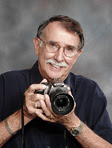This behavior still available in Photoshop CS4, it is just accessed a little differently now that the Adjustments panel is used in the place of the dialog box when working with adjustment layers.
Previously you could drag the mouse around the image to see a "bouncing ball" on the curve that would indicate the point on the curve that represented the tonal value under your mouse at any given time.
- If you held the Ctrl/Command key when you did this, upon releasing the mouse an anchor point would be placed on the curve in the place represented by the tonal value under your mouse.
- In Photoshop CS4 in order to access these capabilities you first need to turn on the "direct adjustment" control by clicking on the icon of the hand with the double-headed arrow next to it at the top-left corner of the Adjustments panel.
- With this option turned on (the button is a toggle to turn the control on and off) you can simply move your mouse (without holding the mouse button down) to see the "bouncing ball" on the curve indicating the tonal value for the pixel under your mouse pointer.
- If you want to add an anchor point, you can click the mouse in the desired location on the image (with no need to hold the Ctrl/Command key).
- Even better, you can click on an area of the image you want to focus an adjustment on, and then simply click and drag up or down to lighten or darken the image with an emphasis on the tonal value below your mouse when you clicked.
- Upon releasing the mouse button you can also use the arrow keys on your keyboard to fine-tune the position of that anchor point.
